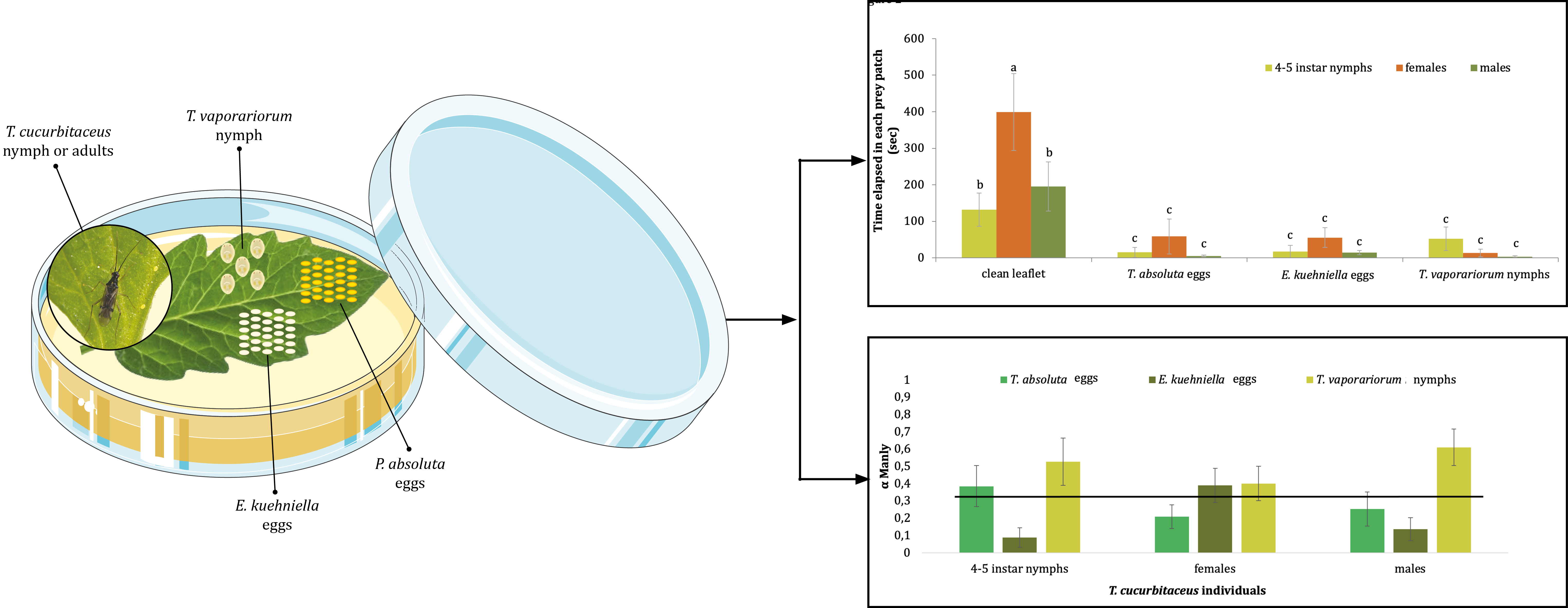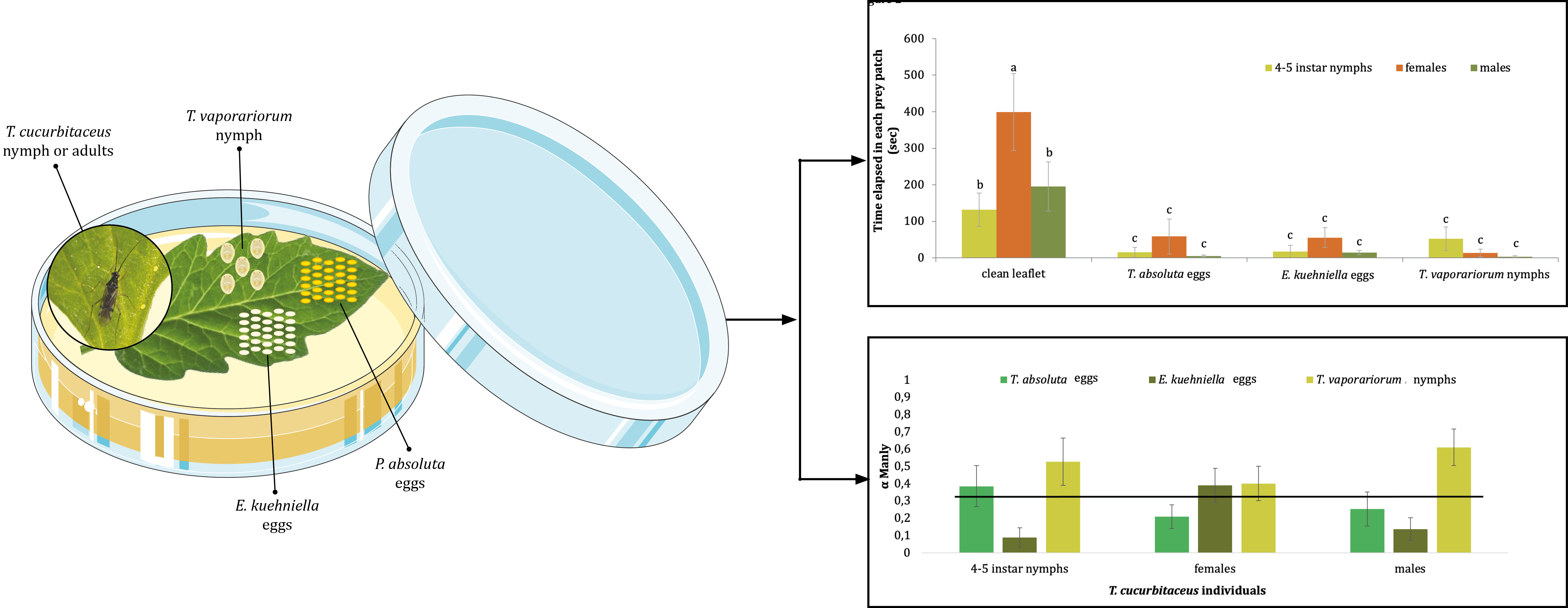Laboratory evaluation of the feeding behavior of the generalist predatory mirid bug Tupiocoris cucurbitaceus (Hemiptera: Miridae) for the biological control of Phthorimaea absoluta (Lepidoptera: Gelechiidae)
DOI:
https://doi.org/10.48162/rev.39.140Palabras clave:
amplitud de dieta, chinche depredadora, Trialeurodes vaporariorum, Ephestia kuehniella, biocontrolResumen

The use of predatory insects has gained interest for reliable and environmentally safe pest management to control the South American tomato leafminer, Phthorimaea absoluta (Meyrick) (Lepidoptera: Gelechiidae), a pest of tomato crops worldwide. Based on video tracking using EthoVision® software and static feeding multiple-choice tests, we report the prey-searching behavior and feeding preference of the Neotropical mirid bug Tupiocoris cucurbitaceus Spinola (Hemiptera: Miridae), a biological control agent of P. absoluta when presented with its eggs and other two prey species. T. cucurbitaceus exhibits generalist feeding behavior; the nymphs initially showed a preference for Trialeurodes vaporariorum Westwood (Hemiptera: Aleyrodidae) nymphs but consumed more P. absoluta and Ephestia kuehniella Zeller (Lepidoptera: Pyralidae) eggs after 24 h. T. cucurbitaceus males preferred T. vaporariorum throughout the experiment while females showed no preference for any prey. Furthermore, they did not cause significant damage to the leaves. The findings emphasize the importance of evaluating the simultaneous offer of multiple prey types to understand the effectiveness of biocontrol agents in the field. Overall, the research contributes valuable insights into the feeding habits of T. cucurbitaceus, supporting its potential as a biological control agent for P. absoluta in tomato crops.
Highlights:
- Tupiocoris cucurbitaceusnymphs and adult of both sexes showed a generalist feeding behavior, with no clear prey-searching patterns across developmental stages.
- Nymphs initially preferred whiteflies but consumed more lepidopteran eggs after 24 h, males preferred whiteflies throughout the experiment while females showed no preference for any prey.
- Tupiocoris cucurbitaceusdid not leave marks on the leaf after performing phytophagy.
- The study supports the potential of cucurbitaceusas a biological control agent for absoluta in tomato crops.

Descargas
Publicado
Número
Sección
Licencia
Derechos de autor 2018 Revista de la Facultad de Ciencias Agrarias UNCuyo

Esta obra está bajo una licencia internacional Creative Commons Reconocimiento-NoComercial-CompartirIgual 3.0.
Aquellos autores/as que tengan publicaciones con esta revista, aceptan las Políticas Editoriales.



